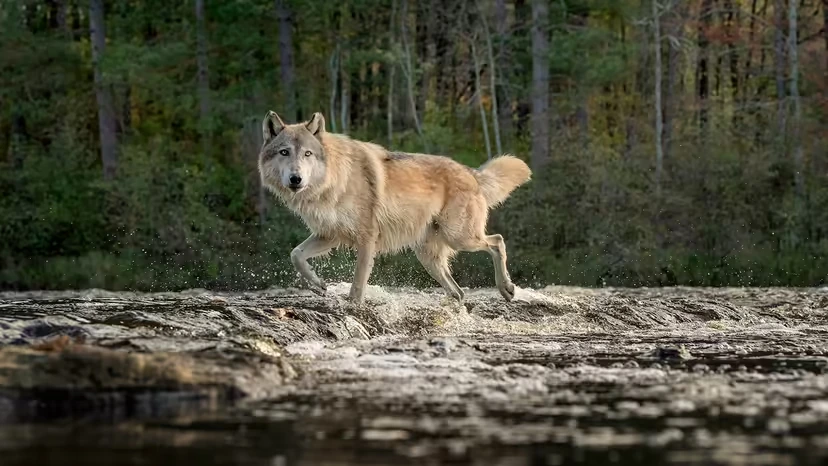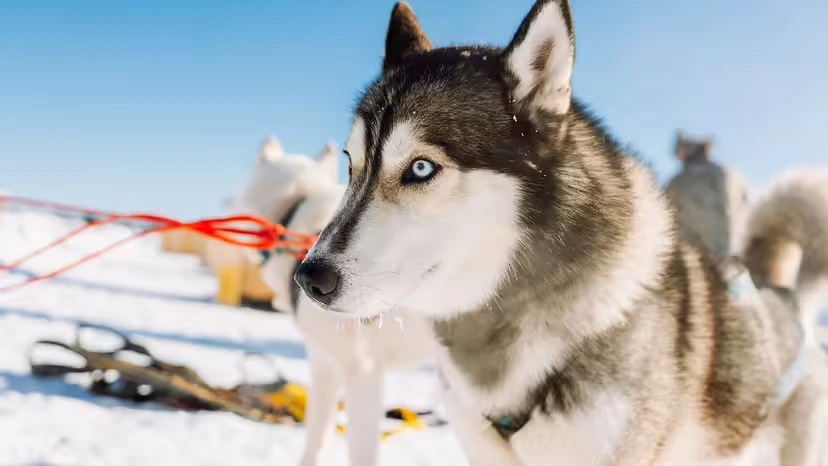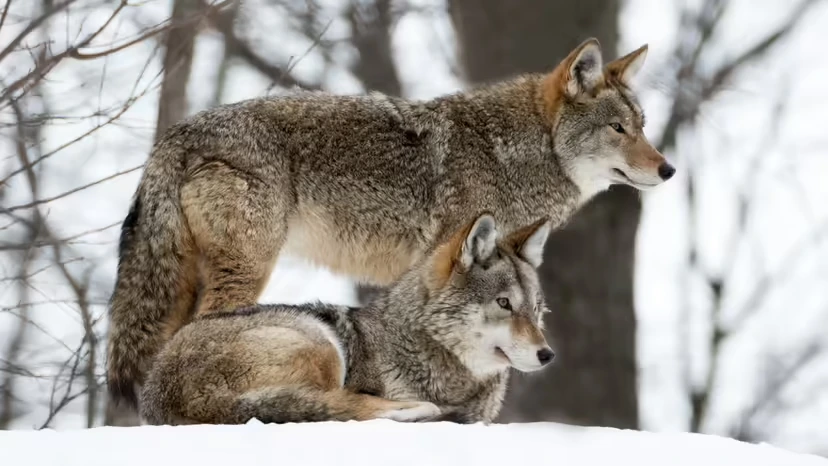Bottom line: Siberian Huskies (domestic dogs) and Gray Wolves are close relatives, but centuries of domestication versus wild adaptation have pushed them onto very different paths. A wolfy look does not equal wolf behavior. “Wolf-dogs” exist, but they’re legally restricted in many places and rarely suit typical homes.

TL;DR quick take
Species status: pet vs. wildlife
Anatomy & physiology: more than a look
Behavior & social structure: the domestication effect
Why Huskies look “wolfy” yet love humans
Same roots, different roads: genetics today
Wolf-dog hybrids: can you/should you?
Husky vs. Wolf quick-compare table
Common myths & safety tips
FAQ
Identity: Husky = domestic dog (Canis lupus familiaris); Wolf = wild Gray Wolf (Canis lupus).
Build: Wolves have longer legs, deeper chests, heavier skulls; Huskies are more compact and variable.
Eyes: Wolves are typically amber/golden; blue or odd-eyed is common in Huskies, not a wolf trait.
Behavior: Wolves avoid humans; Huskies are selected to cooperate with humans and other dogs.
Wolf-dogs: Possible but unpredictable, often restricted by law, and not beginner-friendly.
Siberian Husky is a domestic dog breed shaped by human selection to live and work with people.
Gray Wolf is a wild apex predator adapted for survival—energy budgeting, risk avoidance, hunting systems—not cuddling on the couch.

Skeleton & posture: Wolves show longer limbs, deeper chest, robust skulls; Huskies are compact endurance athletes.
Head & muzzle: Wolves have broader, heavier muzzles; Huskies often display mask markings and finer facial lines.
Eyes: Wolves trend amber/gold; Huskies commonly have blue or heterochromia (odd eyes).
Coat & thermoregulation: Both have double coats for cold climates, but fat distribution, metabolism, and stress reactivity in dogs reflect domestication.
Dentition & bite: Wolves have more robust crowns and bite forces for tearing large prey; dog dentition is more variable and diet-flexible.
Wolves: Family-based packs with clear role allocation, high vigilance, strong territoriality, and human avoidance.
Huskies: Selected for high social tolerance, human cooperation, and trainability; friendlier to strangers, generally lower defensive aggression.
Domestication syndrome: Compared with wolves, dogs show juvenile-like behaviors longer, altered stress responses, and increased sensitivity to human cues.
The Chukchi people developed Huskies as sled dogs: cold-hardy, ultra-endurance, cooperative, and responsive to handlers.
Alaskan Husky isn’t a closed “pure breed” but a high-performance working population bred for speed, stamina, and resilience.
Selection preserved wolf-like form where useful (ears, coat, tail, aerodynamics) but rewired temperament for cooperation.
Dogs and wolves remain closely related, but key loci differ for stress pathways, sociability, cognition, metabolism, and digestion.
Modern dog diversity comes from intense recent selection; wolves retain conservative wild-fitness adaptations.
Biologically possible, but often behaviorally unstable: variable fearfulness, high prey drive, low human focus, escape-prone.
Training & husbandry: Narrow socialization windows, advanced containment, enrichment, and expert handling are required.
Legal & liability: Many regions restrict or ban wolf-dogs; insurance and public-safety obligations are significant.
Welfare: Most households are not equipped. If you want a “wolfy” companion, choose a dog breed with that look (Husky, Alaskan Malamute, Saarloos/Czechoslovakian Wolfdog—where legal) and meet its training/exercise needs.

| Dimension | Husky (Domestic Dog) | Gray Wolf (Wild) |
|---|---|---|
| Taxon | C. lupus familiaris (domesticated) | C. lupus (wild) |
| Build | Compact endurance dog; variable size | Longer legs, deeper chest, heavier skull |
| Eyes | Blue/heterochromia common | Typically amber/gold |
| Sociality | Human-oriented, high dog-dog tolerance | Family pack, high vigilance, human-avoidant |
| Role | Sled pulling, partnership tasks | Hunting, territory defense, pup rearing |
| Trainability | Strong (task-driven, cooperative) | Wild learning within pack; not a pet |
| Home suitability | Yes—with high exercise & management | No—wildlife protection applies |
Myth: “Wolfy looks mean wolf blood.”
Reality: Appearance ≠ ancestry. Only pedigree/genetic testing and lawful documentation answer that.
Myth: “Wolf-dogs are more loyal/protective.”
Reality: Hybrids are less predictable, not “ultra dogs.”
Myth: “Husky destruction = bad dog.”
Reality: It’s unmet exercise, chew, and mental needs. Fix with structured training, outlets, and enrichment.
Encountering wild wolves: Keep distance; don’t feed or approach; secure pets; back away slowly—don’t run.
Are Huskies descended from wolves?
Yes—like all dogs—but they’re domesticated with significant behavioral and genetic differences.
Can crossing a wolf with a dog make a “smarter” pet?
No. You’ll likely get unpredictability, legal issues, and husbandry challenges—not a super-pet.
I want a wolf-like companion—what should I choose?
Pick a domestic breed with that look (Husky, Alaskan Malamute, Czechoslovakian Wolfdog where legal) and commit to high exercise + training.
Are Huskies “hard to own”?
They’re high-drive, high-endurance dogs with escape artistry and prey drive. With sufficient exercise, recall/lead training, and enrichment, they make outstanding companions.
animal tags:
We created this article in conjunction with AI technology, then made sure it was fact-checked and edited by a Animals Top editor.